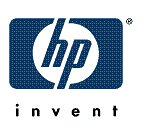
As the portal domain lead at Hewlett Packard, I am responsible for portal technologies, frameworks and applications HP-wide. In this role, I work with hundreds of portals in many countries and languages. Today, I see far fewer portals attempting mobile technologies than four years ago when the topic was hot.
It is not that there is a lack of interest in providing the content to as broad an audience as possible; the reasons are much more complex. This paper explores some of those barriers and talks about some of the things we are doing to bridge the gap bringing desktop content to the mobile users.
The biggest issue with setting up a mobile web user experience is that mobile devices still are "different enough" from desktops that historically we have had to build alternate browsing experiences for mobile device users. This means that we've setup separate environments, separate content teams and special procedures just to handle the mobile devices.
These separate mobile portals have been plagued with issues:
While it is tempting to begin exploring everything a mobile device can do, I believe it is important first to "bridge the gap" between content that is available on the desktop and make that same information available to the mobile device. Once this is done, then the full capabilities of the mobile devices need to be explored to see which of those capabilities need to be bridged back to the desktop (VoIP, Voice Recognition etcetera).
Bridging the gap and making the same information available across a wide range of devices does not require new systems as much as it requires a different way of thinking about content.The traditional model of web pages being hard-coded does not lend itself to large scale implementations anymore. In the traditional sense, a promotion that is present on a few thousand pages would take days (or weeks) to setup in the first place, and then changes would be equally laborious. Not to mention that all tech companies these days are multi-national, meaning that that same promotion needs to be translated into a multitude of languages and may need to be modified by country or region. Because of our desire to be highly accessible, we are also tracking content by accessibility levels offering text instead of images, etcetera.
The key is to develop content in distinct objects which can have multiple views. Most companies are already making this leap. These objects are then assembled into a navigational experience by linking the objects together to form pages or views that the end-user sees as they navigate to the site.
In order to bridge the gap successfully, we need to look beyond the objects and country language settings, but also begin to track country/lang/device-types so we can map the correct content types to the correct browser experience. By using xml to describe our "pages" we simply take the page content, along with the user-profile, and produce a best-fit page structure for that user.
While this technology is beginning to be used today, we are lacking the device profiles and, specifically, the grouping of device profiles needed to optimize that data to the particular devices today.
We need to bridge the gap using existing content systems, existing portals that are able to render a full experience out to the customer regardless of the device profile. This allows us to view the page in the context of the browser type—want to print from your phone? Then print the full desktop page instead of a WAP representation of the content. You can do that if you share the same content, the same infrastructure and the same portal.
It is important to point out and acknowledge that mobile devices offer a huge array of additional capabilities over the current desktop web experience. While my intent is to bring current information to the mobile devices, it is very important that we have an eye on the future development as well. Not only should full advantage be taken of the mobile device, but also we will need to look at bridging some of those improvements back to the desktop:
Many of the same capabilities that exist with mobile devices today are not integrated with the desktop-internet easily. While it is tempting to begin building a browsing experience to exploit these capabilities, we could not do so without separate infrastructures—again, the need to bridge the current gap.
Mobile network computing for handhelds has not taken off for a few good reasons. The technologies for multiple "versions" of the same content are still maturing; the lack of standardization around capabilities and footprints has caused confusion. The lack of standards for content tagging and device profiling have caused the creation of mobile portals to be a one-off (and thus expensive) solutions.
However, I do believe that we are turning a corner on web portal designs that enable the developers to exploit the use of the same portal infrastructure to be able deliver content for mobile devices as well desktops. By developing new standards such as device profiles and content tagging, we will be able to assemble the "component data objects" that a customer requires. By developing a set of best practices for developing these portal environments, we will be able to assemble content objects across portal and organizational boundaries.
By using the same systems for desktops as well as mobile devices, we do not incur the large cost of setting up special rendering environments for each type of mobile user. Using one system means our per-page/per user cost would be much lower. Leveraging technologies like Xforms, xml, xslt, css we can get there building on where we are today. This is how we will make the content available—and once it is done, it will be more likely that people will start using their mobile devices to search out that content.
15-october-2004 Hewlett Packard; Ed Rice.